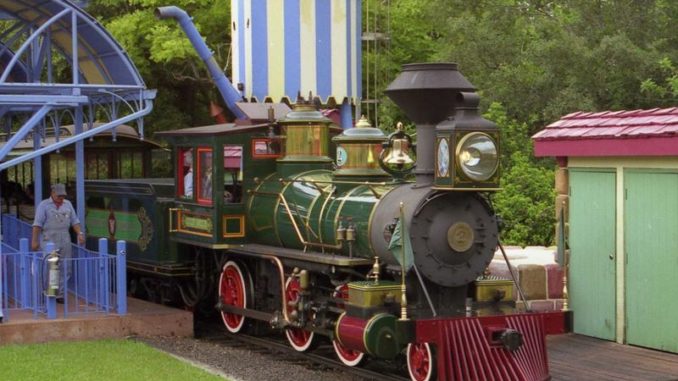
The 2-6-0 or Mogul locomotive dates to 1852 and builders produced the locomotive until the 1920s. The engine features six drive wheels and a pair of smaller leading wheels.
Initially, the wheels were mounted directly to the frame of the locomotive rather than a separate truck or bogie and used to distribute the weight over additional wheels.
The first 2-6-0 with a rigidly mounted leading axle was the Pawnee and built for heavy freight service on the Philadelphia & Reading. Roughly 30 locomotives of this type were built for various railroads.
While they were successful in slow, heavy freight service, the railroads that used them didn’t see any great advantages in them over the 0-6-0 or 0-8-0 designs of the time. This design was essentially an 0-8-0 with the lead axle unpowered.
The first true 2-6-0 was built in the early 1860s, the first few being built in 1860 for the Louisville & Nashville railroad. The design that we know today required the invention of a single-axle swiveling truck. Such a truck was first patented by Levi Bissell in 1858.
The New Jersey Locomotive and Machine Company built its first 2-6-0 in 1861 as the Passaic for the Central Railroad of New Jersey. The Erie Railroad followed in 1862 with the first large order of this locomotive type. In 1863, Rogers built what some cite as the first 2-6-0 built in the United States for the New Jersey Railroad and Transportation Company. 1899, in Gyeongin Line Mogal.
The railroads that used these first 2-6-0 examples noted their increased pulling power, but also found that their rather rigid suspension made them more prone to derailments than the 4-4-0s of the day. Many railroad mechanics attributed their derailments to having too little weight on the leading truck. In 1864, William S. Hudson, then the superintendent of Rogers, patented an equalized leading truck that was able to move independently of the driving axles. This balanced suspension worked much better over the uneven tracks of the day. The first locomotive built with such a leading truck was likely completed in 1865 for the New Jersey Railroad and Transportation Company as their number 39.
It is likely that the locomotive class name Mogul derives from a locomotive built by Taunton in 1866 for the Central Railroad of New Jersey; that locomotive was named Mogul. However, it has also been suggested that, in England, it derived from the engine of that name, built in 1879 by Neilson and Company for the Great Eastern Railway.
